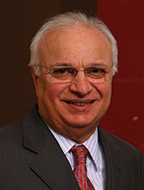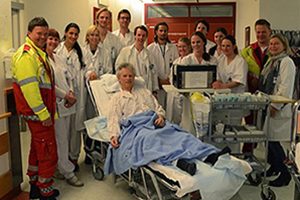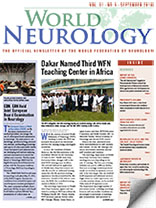
Raad Shakir
For decades, the World Federation of Neurology (WFN) has endeavored to do its best to advise on training young neurologists in the developing world. As a matter of fact, one of its central functions is training to support quality neurology worldwide.
If we look dispassionately at the current situation, we find that indeed the number of neurologists per capita has globally increased. However, if we look at the provision of care and the value to patients, the situation may not be as rosy. Neurologists cannot work in isolation. The provisions of facilities for investigations and support are, to say the least, essential. We always try to produce a false sensation of satisfaction when we look at figures, but studies on effectiveness of neurological care are hard to come by.
In the real world, we have to look critically at the existence of supporting services and then perhaps make a judgment. Let us start with the availability and reliability of laboratory services. In more developed parts of the world, clinicians request all kinds of simple and more complicated tests, whether they are blood tests or histological tests. Neurologists expect timely and reliable results. This is far from the reality in most of the developing world. The types of tests available are limited, and quality control is unknown. Even simple routine tests have to be treated with caution. Immunological and genetic testing for a host of neurological conditions is totally lacking, and neurologists still rely on “clinical” diagnoses and judgment in treating patients.

The acute stroke team at Oslo University Hospital, Norway. Photo: Espen Dietrichs, MD, PhD.
Let’s look at some examples. If we start with neuromuscular diseases, the availability of the acetylcholine receptor antibody assay is a problem that leaves managing myasthenia gravis difficult. Although the clinical presentation and response to anticholinesterase inhibitors is sufficient in many, definitive diagnosis needs confirmation in others. If one continues on this theme and then proceeds to more complex treatment, in many parts of the world intravenous immunoglobulins are prohibitively expensive and, in some, plasma exchange is an alternative. In others, neither are available and medical treatment with anticholinesterase inhibitors and steroids are the only options. Even with this, the constant uninterrupted supply of drugs is a major issue. If we again carry the issue further and remain on the same theme, the provision of investigations, including imaging and thymectomy, is a major undertaking. Moreover, myasthenics deteriorate and may urgently require ventilation. The availability of intensive care facilities with expertise in ventilator support is deficient for such patients who will die if not helped.
Another example is acute stroke management, which is the second most common cause of death across the world. We are all aware of the availability of hyperacute stroke units. Centers are springing up across the developed world with facilities for intravenous thrombolysis and more advanced centers with intra-arterial thrombectomy. Even in the more developed parts of the world, not all strokes are taken to a fully equipped center with interventional thrombectomy facilities. If we look at the issues involved, we have to start with the basics of public recognition of early symptoms of stroke, and the provision of urgent ambulance and paramedical service for response, so that we follow the principle of time saves brain. If affected patients are taken to a local hospital, the availability of expertise to acutely deal with the problem needs a huge investment not only in neurologists, but also as importantly in radiologists, radiographers, laboratory technicians, nurses, and neurosurgeons. Such a team needs to operate in unison around the clock. Espen Dietrichs, MD, PhD, of Oslo University, states that the success of thrombolysis treatment in acute stroke depends on prompt response from the patient as well as from pre-hospital and in-hospital health workers. The photo above shows the acute stroke team at Oslo University Hospital in Norway.
A third common scenario is epilepsy; globally 50 million individuals are affected. The diagnosis is by and large clinical, and the availability of MRI and EEG are essential but not vital to start treatment. In spite of that, the International League Against Epilepsy and World Health Organization state that seven out of 10 of those affected do not receive treatment at all. This happens in countries with a reasonable number of neurologists, but most of them are concentrated in large cities, and service is limited. If we extend the scenario further, we know that antiepileptic drugs work in about 70 percent of patients even when used correctly, and this leaves millions of nonresponders. The provision of surgery is a major undertaking, which requires facilities and specialists, such as neurophysiologists, radiologists, neuropsychologists, intensivists, and neurosurgeons in addition to epileptologists. It is no longer possible for a general neurologist to accurately deal with the intricacies of seizures and correctly evaluate the semiology of attacks on video telemetry. Such procedures are beyond the capacities of most centers across the world.
There has been an explosion of what is termed as disease-modifying treatments for multiple sclerosis. The number of drugs available now is staggering, and the way they are advertised is, at times, bewildering. If one attends any neurology congress, the manufacturers of these drugs are the major sponsors. There is no doubt that since the introduction of interferons in the early 1990s with little convincing evidence for significant effect on morbidity, there has been a plethora of studies on many immune regulation modifiers in one way or another. There is a common denominator in all of them; they are not easy to use by the general neurologist as well as being prohibitively expensive. The efficacy of the recent drugs is better established when compared to the interferons, which are now being slowly abandoned. Again, we must look at the condition itself globally and try to determine how it is dealt with and managed. Multiple sclerosis can be diagnosed clinically when all the pieces of the jigsaw fall in place. However, it is not possible to make a diagnosis of a “clinically isolated syndrome” as an example without the availability of imaging and laboratory support. The reliability of the cerebrospinal fluid oligoclonal bands test is beyond the vast majority of laboratories across the world, let alone the test for aquaporin 4 antibodies. When reviews are produced in neurological journals, the latest advances are correctly mentioned as a matter of fact without consideration of what to do without them. In the developed part of the world, MS-ologists as well as MS specialist nurses have sprung up, and they deal with the intricacies and the major side effect profiles of these medications.
Looking at all of this and innumerable other examples, one cannot escape the fact that much of the world is split between the haves and the have nots. The latter is by far the majority, and international organizations like the WFN have to represent all. The major issue is that governments are difficult to convince about the need for teams of trained neurologists, neurophysiologists, neuroradiologists, neurointensivists, nurses, and technicians. The investment in a world-class neurological service is massive, and we need to continue to push toward that.
